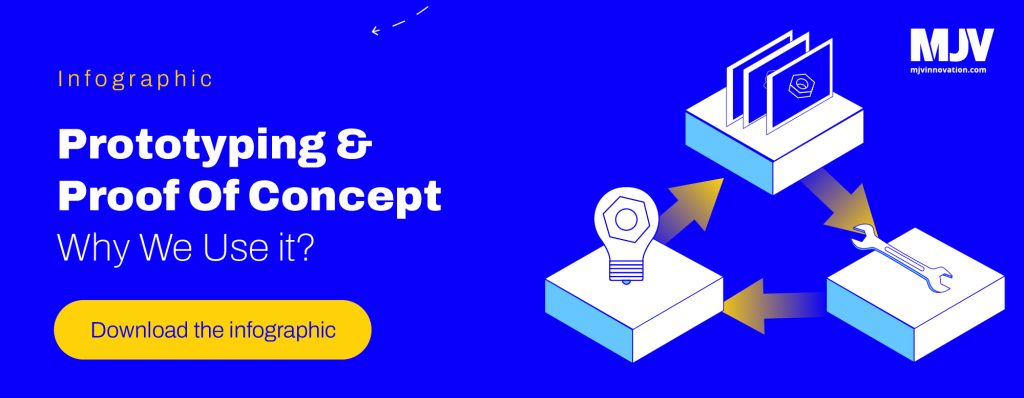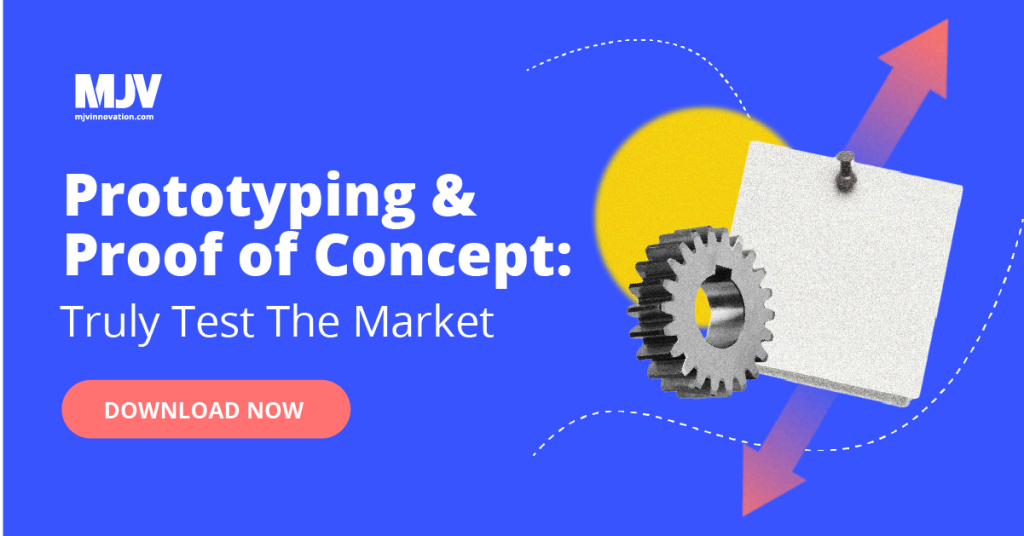Proof of Concept: create bulletproof solutions with concept testing
Developers are always coming up with new features and products to push out into the market. The problem isn’t coming up with new ideas, there’s a surplus of that. The challenge lies in determining which ideas are worth following up on, and which ones are better left aside. Especially since 95% of all product launches fail.
Read our full article and learn everything you need to know to master your proof of concept process and build bulletproof solutions.
What is a Proof of Concept
A Proof of Concept is nothing more than evidence of the feasibility of a product or idea through experimentation. There you have it, satisfied?
Obviously the idea of Concept Testing goes much deeper than its definition. In this article we’ll try to focus more on how best to execute a PoC as well as when to use it and why.
Concept testing is a research method that involves asking possible or current (best for adding features) users questions about your idea before actually putting it on the market. It’s a form of prototyping that doesn’t require you to actually build a model of your product to get feedback on usability and feasibility. There is a debate within the Design Thinking community as to whether or not a PoC can be considered a prototyping tool, since you never actually build a working model before conducting it (but let’s move past that).
When coming up with a concept for a product or feature, you’re essentially asking yourself if your idea matches up with what you think your target audience wants. You could say that Concept Testing gauges whether or not your assumptions about your target audience are accurate more so than if your idea is good or bad.
When is the best time to execute Product Testing?
Product Testing is an early stage marketing technique that occurs before developers actually get to work on building a prototype. The idea is to essentially test your concept before any resources are committed to it.
The worst time to execute Product Testing is after a prototype has already been developed. The last thing you want is to invest time, effort, and money into an idea only to find out that your target audience isn’t even interested in what you’re making.
Product Testing is not by any means a replacement for Design Thinking’s Ideation phase. It is a way to test one or several concepts that make it through the Ideation phase before moving on to hands-on prototyping. It is also not a substitute for brand testing or focus groups. These tools focus much more on audience perception (emotional and style) whereas PoC is more focused on product viability.
Product Testing differs from other forms of market research due to it’s two-way nature. Instead of simply probing your target audience for things they would like, it’s a give and take relationship. You show a group of people what your idea is, and based on their feedback, you can alter your concept and workshop the idea, allowing them to view your progress as your offer gets closer and closer to a viable product.
What are the benefits of Product Testing?
The benefits of creating a Proof of Concept are varied. Below we’ll share just a few of them:
1. It gives leaders more actionable insights for decision-making.
Do-overs are always costly, and having to start from scratch even more so. Having a PoC allows for incorrect assumptions and missed opportunities to reveal themselves early on in development. Providing leaders, designers, and devs with more information with which to make important decisions.
2. It provides support for the project at an early stage of development.
If you happen to operate within a work environment that requires a lot of approval from higher-ups before getting a project off the ground, then a positive Proof of Concept can give your team the support they need to convince high ranking members of the organization.
3. Cost effectiveness, and an absurd return on investment.
Concept Testing is not just a great way to test out assumptions before getting to work on a project, it’s also a very cheap process in general. It can even be done remotely, through surveys and questionnaires. This makes the process virtually free (not counting the few man-hours needed to write survey questions) while providing a great risk-mitigation tool for your projects.
4. PoC market research can strengthen your customer relations.
Providing a company with feedback is one thing, but seeing your feedback actually being implemented in the final design of a product is an entirely different feeling. When fans of Sonic the Hedgehog saw the first preview of the new movie by the same name in 2019, they loudly voiced their concerns about the main character’s design choice. When Sega took that feedback and completely changed the character design to be more in line with the classic video games, fans were overjoyed that their voices had been heard.
Clearly the benefits from Concept Testing are many, and they stretch way beyond what we mentioned here. Sometimes simply getting feedback can have a lot of unintended positive consequences. You’ll never know until you actually execute a Concept Test yourself.

Does the content work for you? Be sure to also check our visual story about POC and prototyping by clicking right here.
Different types of Concept Testing
Ok, now things get deeper. There are several ways to execute a Concept Test, but the three most common are:
Monadic Testing
Monadic testing breaks up your target audience into multiple groups. Each of which is shown only a single concept. It is advised that each concept be shown to several groups, to make sure that feedback isn’t limited to a single group. The idea behind this type of testing is to analyze an idea in-depth. They are usually quick and highly targeted.
This test allows for designers to get feedback on several concepts at the same time. This provides in-depth feedback without making the survey itself too lengthy. Researchers should also ask follow-up questions about the different aspects of each concept: what they liked about it, it’s style, price point, feel, etc. While each group sees a different concept, the questions should remain the same.
Due to the fact that your target audience will be split up into several groups, this kind of survey requires a much larger sample size. Something that could significantly increase the cost of research, especially if the tests are conducted in-person.
Sequential Monadic Testing
This survey follows the same procedure as regular monadic testing. The only difference being that while your target audience is split up into different groups, each group is shown all of the concepts in sequence. The order in which the concepts are presented should be randomized for each group, to prevent first-look bias.
Since each group is being shown all of the concepts, the sample size can be significantly smaller than that of a simple monadic test. This greatly reduces the cost of research and is ideal for projects that are limited by budget constraints.
The downside to sequential monadic testing is the length of time it takes to complete the survey. This can lead to a nonresponse bias, but can be remedied by shortening the questionnaire at the cost of insight depth.
Comparison Testing
During a comparison test, your target audience is asked to compare two or more concepts through a rating or ranking system, using questions like: which concept do you think is the most worthwhile at its price? Other questions that go into more detail about why these rankings were chosen are a good way to get comparative feedback.
Comparison tests are useful for ranking your concepts in relation to one another but usually provide little in the way of in-depth analysis. It is suggested that these kinds of tests take place after other forms of Concept Testing have already yielded actionable feedback. That way you can choose between two winners and not two concepts you’re still uncertain about.
General Proof of Concept Advice
The feedback you get from Concept Testing will almost always be qualitative. Some questions relating to price points may be more quantitative, but usually you’re looking for questions that will give you a mixture of emotional and logical responses from your audience.
It helps to set an objective for your surveys. Think about what you want to achieve with this test and what kind of insights you’re looking to extract from your target audience. This will help you write questions with a goal in mind. It also helps to organize the questions in neat blocks and keep your survey design consistent throughout an entire project. Not only to eliminate questionnaire style as a variable for response bias, but also to help respondents focus on one question at a time.
When using a ranking system for questions, we suggest using a likert scale. These scales are ranked on an odd number scaling system (one to five or one to seven) and help respondents ascertain a more precise measurement of their feelings.
When it comes to online surveys it is essential to include demographic questions such as respondent age, gender, race, etc. This ensures that you not only have a varied array of respondents, but also provides you with more information on your target audience and facilitates feedback sorting post-survey.
Well, that covers our advice and insights into Concept Testing. The next time you’re coming up with new ideas for products, services, or features why not try getting a Proof of Concept before moving on to prototyping. And if you’re still uncertain about how to start, or would just like an expert opinion on where to begin, why not reach out to one of our consultants? Remember, you don’t have to go it alone.

